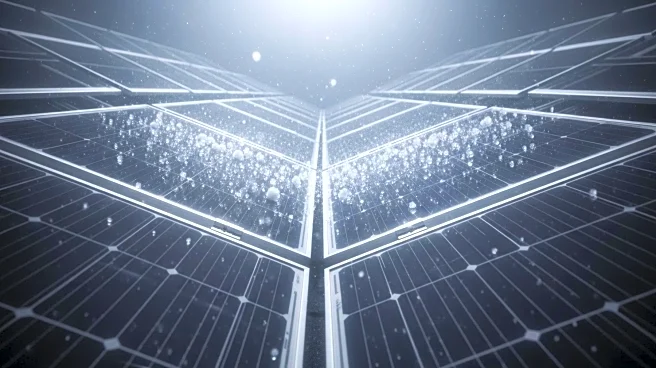What is the story about?
What's Happening?
VDE Americas and the Renewable Energy Test Center (RETC) have introduced the Hail Resiliency Curve (HRC) Test, a new protocol designed to assess the resilience of solar panels against hail damage. This test marks a significant improvement over existing industry standards by simulating real-world hailstorm conditions, where solar panels are subjected to impacts from various hailstone sizes and wind speeds. The HRC Test involves firing hailstones at solar panels until glass fracture occurs, providing accurate data on a panel's breaking point. This allows solar panel manufacturers to optimize designs for hail resistance, project developers to conduct cost-benefit analyses, and insurance providers to adjust coverage based on empirical data. The test is expected to provide the solar industry with better tools to protect against hail damage.
Why It's Important?
The introduction of the HRC Test is crucial for the solar industry as it addresses a long-standing need for more rigorous hail testing. By providing detailed data on solar panel performance under hailstorm conditions, the test helps manufacturers improve product designs and offers project developers and insurers a more reliable basis for decision-making. This could lead to enhanced durability of solar panels, reduced financial risks, and potentially lower insurance premiums. The test's ability to generate Weibull distribution curves for glass failure probability offers a statistically robust method for comparing different solar panel models, which could drive innovation and competition in the industry.
What's Next?
As the HRC Test gains traction, early adopters from various sectors of the solar manufacturing landscape, including publicly traded companies and startups, are expected to leverage the test to qualify glass suppliers and innovative product designs. The test's results could influence future solar panel standards and insurance models, potentially leading to widespread adoption across the industry. Stakeholders may also explore further applications of the test data to enhance solar panel resilience and reduce the impact of hail damage on solar energy projects.
Beyond the Headlines
The HRC Test not only provides a new standard for solar panel resilience but also highlights the importance of empirical data in risk assessment and product development. By challenging conventional hail risk models, the test could lead to a paradigm shift in how the solar industry approaches product reliability and insurance coverage. This development underscores the growing need for advanced testing protocols in renewable energy sectors to ensure the sustainability and economic viability of solar power.
AI Generated Content
Do you find this article useful?














